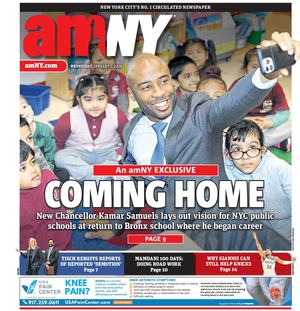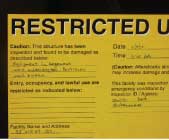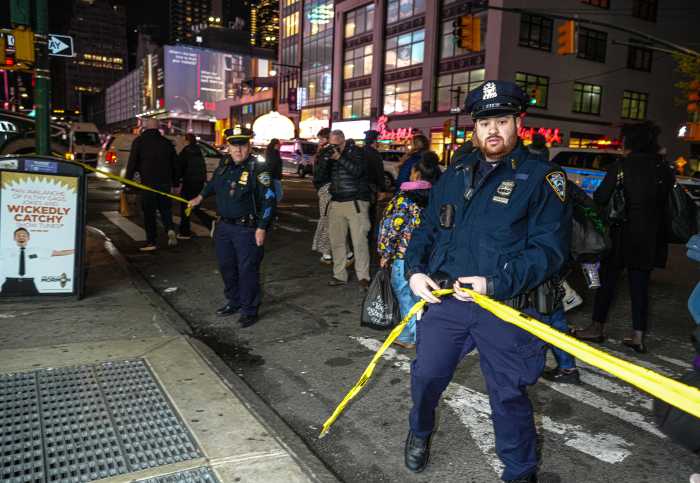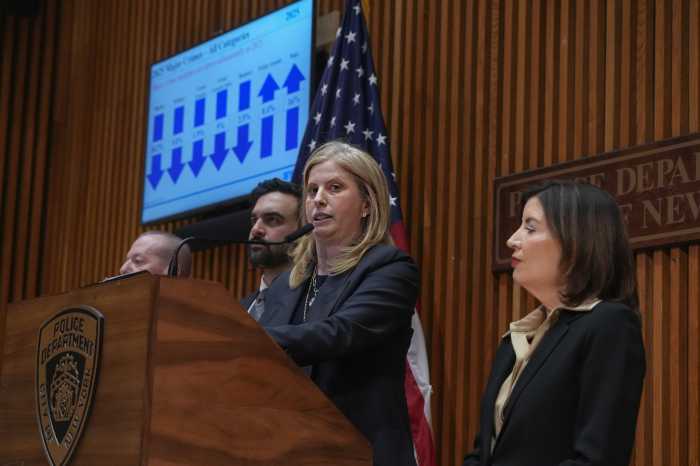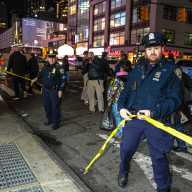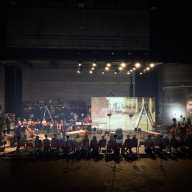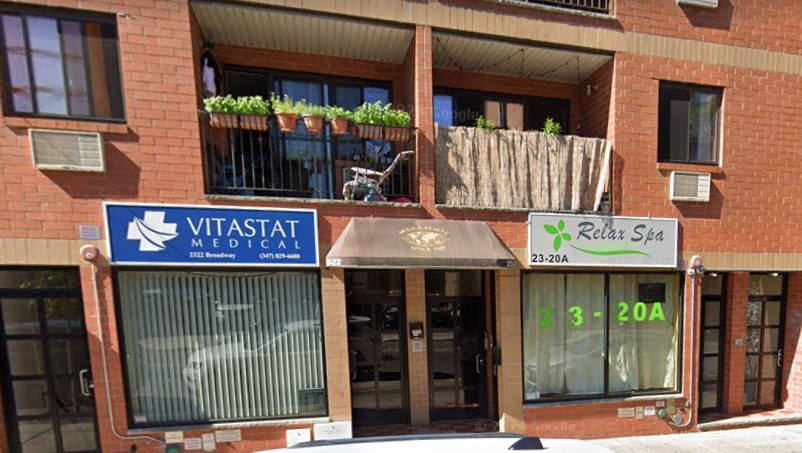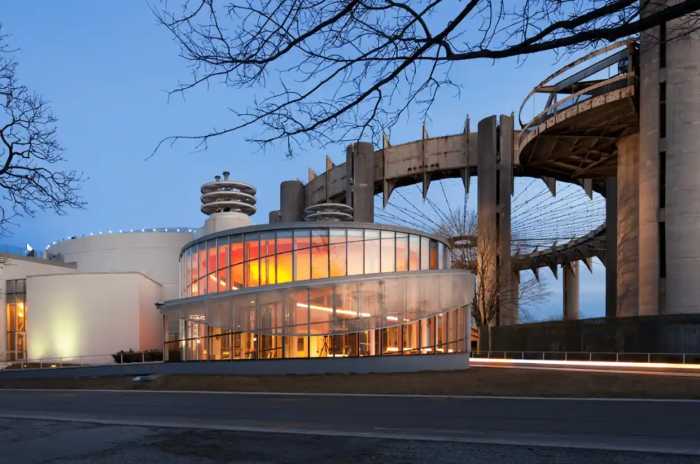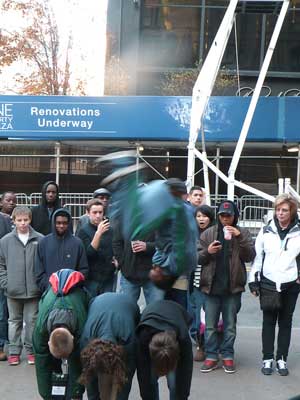
BY JOSH ROGERS | Tom Park rattled off some addresses that keep him in business: 88 Greenwich, 21, 75 and 90 West Street. All were either closed or recently opened but none had enough people living there last Friday to help him much.
“One week we had no income totally,” Park, owner of New Rector Cleaners in the Financial District, said on Black Friday. Now more than four weeks after Superstorm Sandy smacked Lower Manhattan, he thinks daily revenue at his dry cleaner is down about 75 percent at 106 Greenwich St. He’s been able to avoid firing anyone because, he said, business is back to normal not too far up the street at his Tribeca store at 275 Greenwich St.
The laundry service was sandwiched between two of the Department of Buildings’ yellow “Restricted Use” stickers that have permeated the East and West Sides of Lower Manhattan. The stickers typically have handwritten information about storm related damages but are often blank in the section headlined: “Entry, occupancy, and lawful use are restricted as indicated below.”
But around the corner from Park’s store, the scenes were remarkably different. A small crowd, presumably tourists leaving the World Trade Center Memorial, was waiting to pay $ 17 an hour in parking at the Battery Parking Garage.
In the other direction, Gerry Pryor was literally walking Pretty, his English Setter. He lives at 125 Cedar St., within a block or few of the addresses Park listed. He said he felt badly for his displaced neighbors and other areas that had more damage, but for him, “there was just four or five days we had no power.” His deli reopened quickly after the storm and life soon got back to normal.
A block away, large crowds streamed toward the W.T.C. down Thames St., which had been a quiet, narrow stretch prior to the memorial’s opening last year. Catty-corner to the memorial, Zuccotti Park was occupied by street dancers performing for tourists. Police did not stop the dancers from soliciting donations, and were much more tolerant than they had been with the Occupy Wall Street protesters who brought world attention to the park a year ago. Across the street, Century 21 department store was crowded with shoppers.
Far from spreading the pain equally, the storm targeted only some in Lower Manhattan, while others on the same block were relatively unscathed. The Seaport suffered much more than Tribeca, yet some buildings remain closed, and others reopened quickly in both neighborhoods. Downtowners still struggling in the aftermath can’t help but notice the differences.
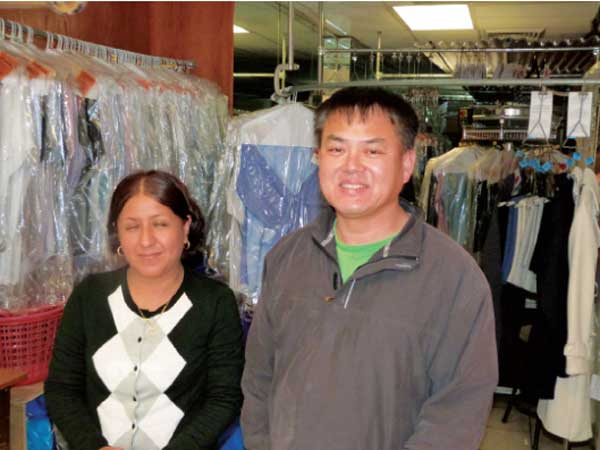
“I have friends in Battery Park who are fine — most of my friends Downtown are fine. If you are in the Financial District, the Seaport, if you have Time Warner cable you’re still disrupted at this point,” said Samantha Tse, who lately has not been living much at her 90 Washington St. home.
Her building reopened last week, but she has been living on the Upper West Side and spending more time in her office, a web startup, because she hasn’t gotten internet service back, and she needs to work off hours.
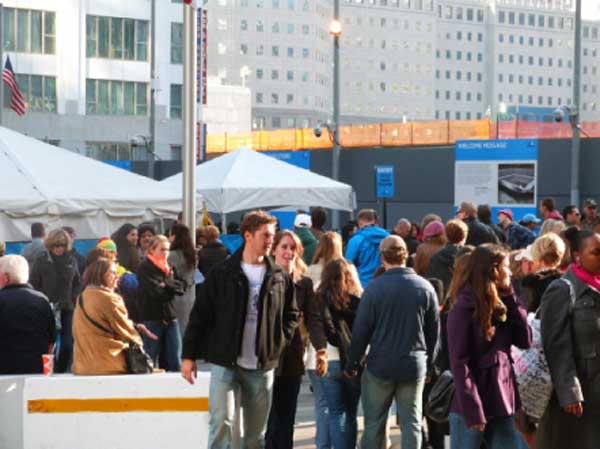
For Jenn Gilbert, who has no idea when she and her family will move back home, the storm has more than stretched the limits of her optimistic nature.
“I’m the type of person, if someone says, ‘it can’t be done,’ I’m going to find a way,” she said in a phone interview. “But every time I think of a plausible way out, it just doesn’t work.”
Gilbert, her husband, their son, 2, and dog spent Thanksgiving in Vermont with family — “we did get away for four days to avoid the rent” — was the way she described it. The family owns a condo at 88 Greenwich St. but has been mostly staying in hotels. Early estimates had the building’s reopening in 4 to 6 months, but now that’s been moved up a little to between 1 and 4.
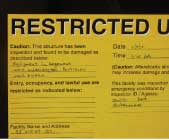
Finding hotels or short-term rentals has been difficult with a dog. Many brokers wanted $4,000 fee for one month, doubling the rent on a $4,000 apartment. On Monday, the couple signed a one-month lease for a one bedroom on the Upper West Side without a broker’s fee.
She and her husband moved Downtown when she was pregnant in order to be in Battery Park City’s P.S. 276 school zone, but now “I feel bitter. I feel the need and urge to get out of our living situation.”
The first week after the storm, she felt Downtowners were in it together with so many people scrambling for places to live, but now “I’m a little jealous because everyone is moving on with their lives, unless they’re the ones who don’t have a home.”
